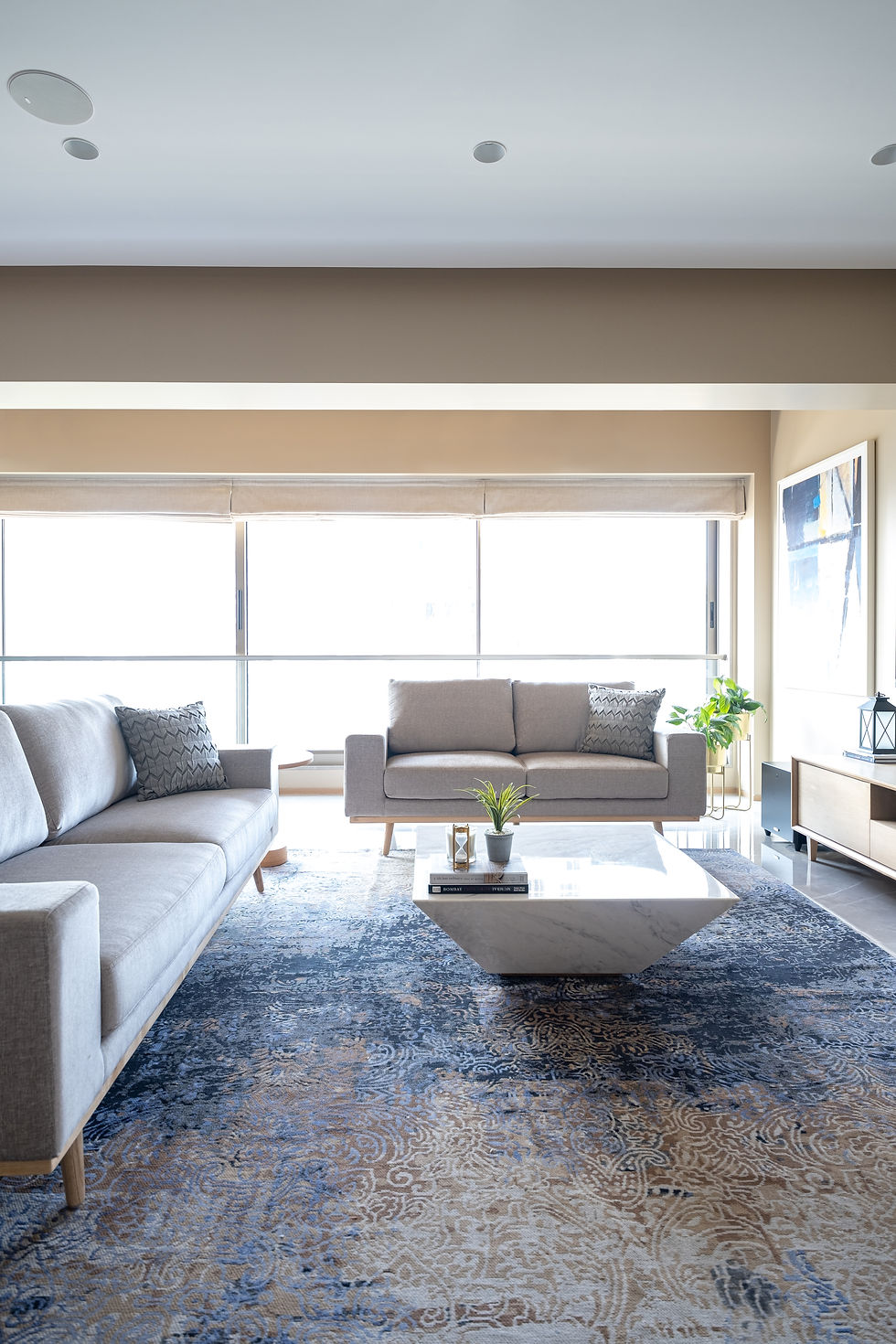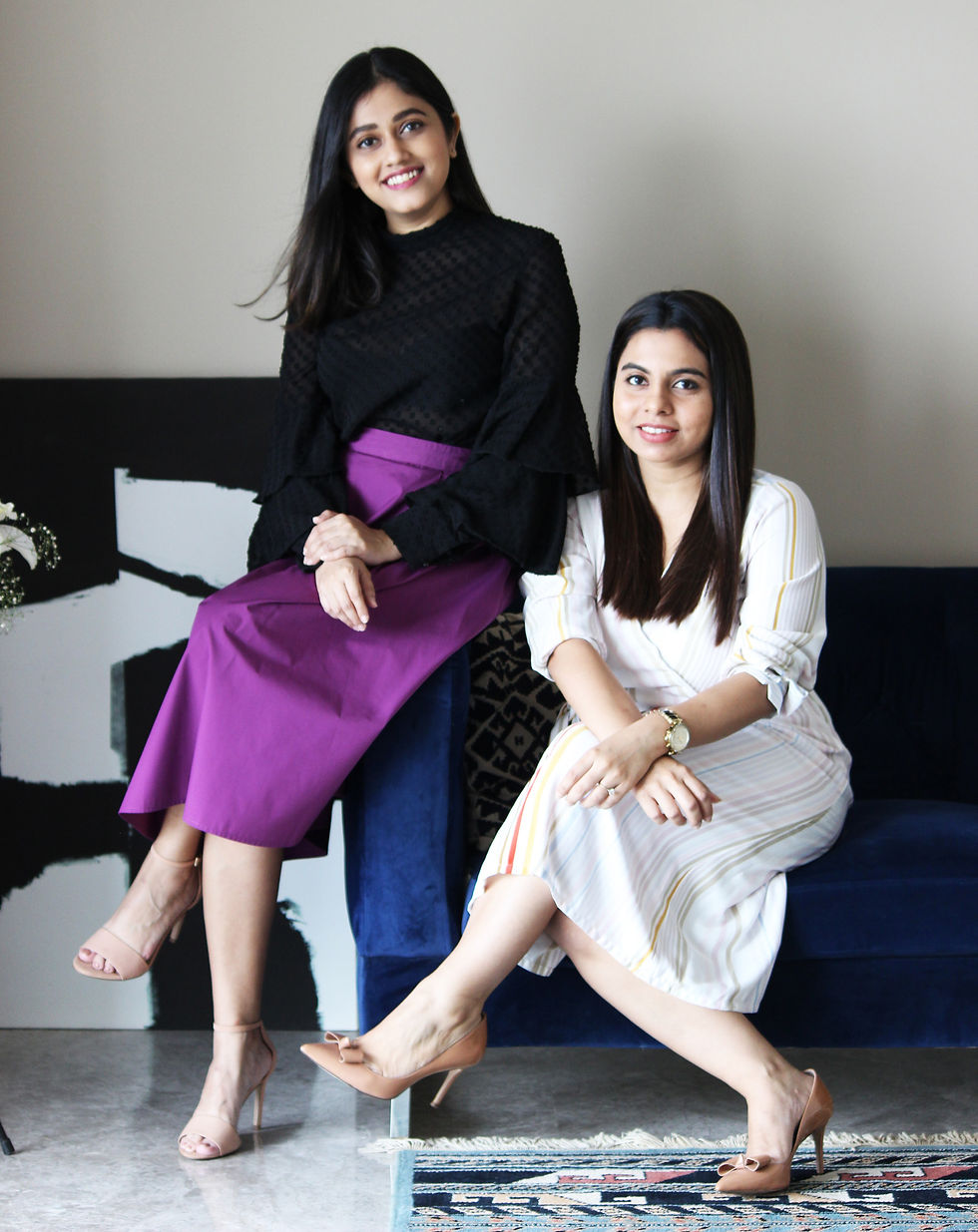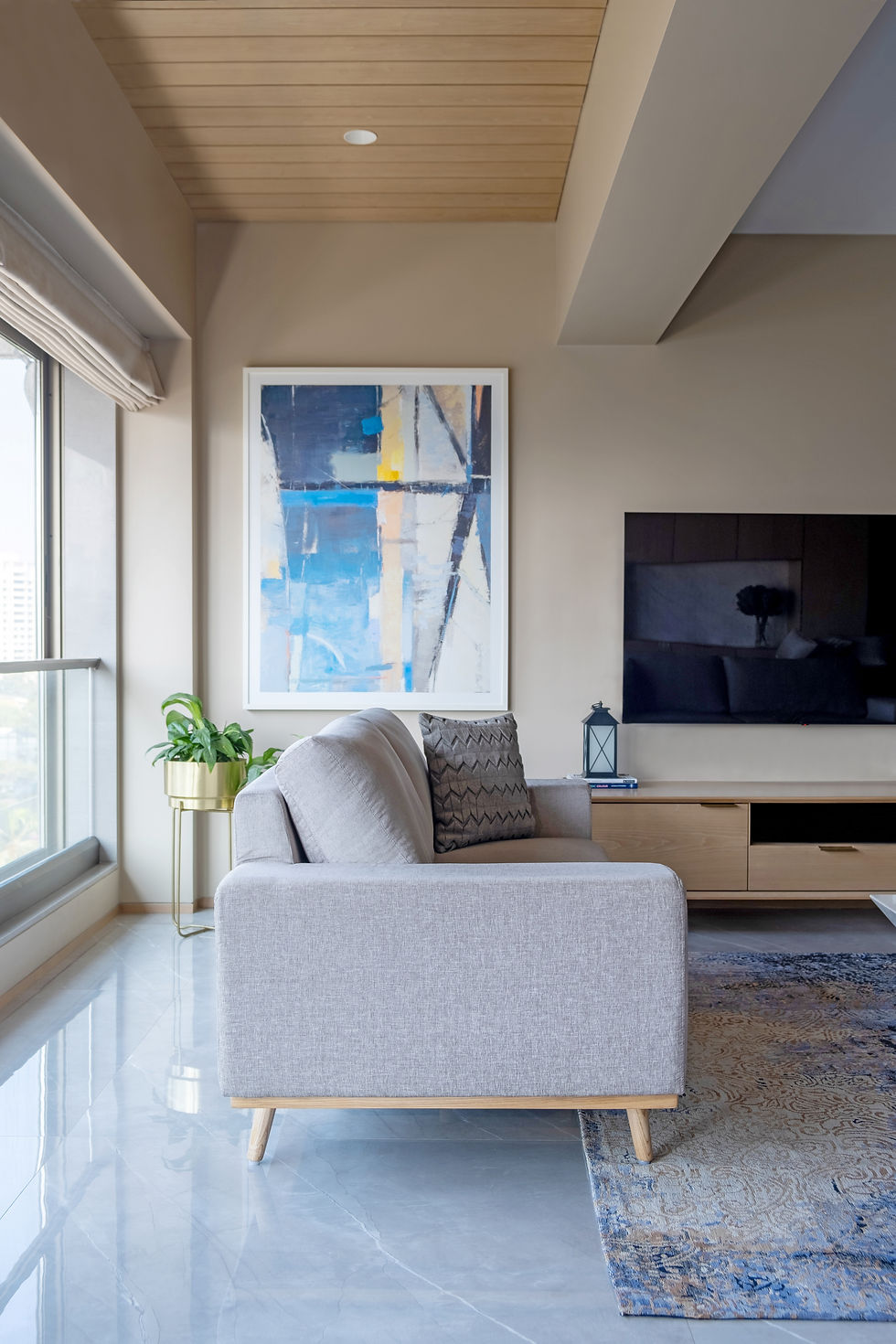Design of the Future
- Editors of Luxe Code
- May 8, 2020
- 5 min read
Co-founders Disha Bhavsar and Shivani Ajmera from Quirk Studio’s latest project the Fluid Home captures their design philosophy of design evoking an emotional response. Photo Courtesy : Kuber Shah

Quirk studio was founded in 2013 with interior designers Disha Bhavsar and Shivani Ajmera joining forces to establish a design legacy that departed from conventional ideas of luxury to cater to modern, novel notions of comfort and self-expression.
The Fluid Home, situated in Mumbai, is a project they recently completed. The studio takes the idea of flexible spaces and fuses it with modern sensibilities and trends. The house, built upon an area of 1500 sq. ft., is designed to create a warm, modern and chic abode for a nuclear family. The house is varnished optimally to let in natural light, while the design palette is inspired by soft pastels and neutral hues.
With many individuals going for versatile spaces, spaces to work, rest and entertain, the idea of fluid spaces has cemented itself within the populace. Think flexible spaces where the walls shift, ceilings rise and rooms perform multiple functions throughout the day and into night. The residence reflects the lifestyle of its occupants and their individuality. Blending functionality with aesthetics, the Fluid home ties every space together in a soft glaze of colours and a touch of luxury. Consequently, every space in the house contributes to speaking a coherent visual language.

Excerpts from an interview with Disha Bhavsar and Shivani Ajmera, Principal Designers and Co-Founders, Quirk Studio
Can you tell us a bit about your background individually and your working style now as Quirk Studio?
Shivani -After graduating with a Bachelors in Mass Media, I went on to study design in Florence, Italy. My education and training, not only equipped me with the technical know-how of the design industry, but also gave me an insight into the world of Design and Art at an international level. This was also helped by my location in Italy, as Florence was the epicentre of the Renaissance Era. Disha - My journey in design started with my schooling in Muscat, Oman, followed by my move to Bombay, where I studied Interior design for 3 years at Nirmala Niketan, which brought me full-fledged into the world of designing spaces. Post this, I studied for my Master’s Degree in Design Management at the Winchester School of Arts at University of Southampton. What drives your design decisions? What are your inspirations? Shivani - I would describe my design sensibility, as contemporary and modern with an element of whimsy and eclectic in good measure. The Mid-Century Modern/ Scandinavian styles and influences, spill into my designs in abundance. Disha - My design sensibility has been influenced by the Japanese ideology of Wabi-Sabi which is a view cantered on the acceptance of transience and imperfection, the aesthetic of which is sometimes described as one of beauty that is “imperfect, impermanent, and incomplete”. This has led to great exploration and creation of simple, reserved and yet elegant and luxurious spaces. I also resonate strongly with Scandinavian and Japanese cultures and design ideologies, due to their simplicity and ability to find beauty in the understated objects around us. Shivani - As a design student, I was immensely inspired by Philippe Starck. His free spirit, unconventional style and the usage of fluid, organic lines as well as materials, stuck with me and influenced my own design sensibilities and aesthetic. Moreover, the attribute that I admired the most about Philippe Starck was his drive to improve and brighten people’s lives by imbuing an element of humour and surprise to the everyday acts of an individual- bringing design to daily life, something that inspires me today as well. Disha - I have always admired designers and architects such as Zaha Hadid, Marcel Wanders, Le Corbusier, Tadao Ando to name a few, for their ability to create a design aesthetic while adding an essence of themselves in their creations. What questions do you typically ask your clients before you work with them and in this particular project(Fluid Home) What was the brief and how did you go about executing it? It’s extremely vital for us to vibe with our client and be on the same page with them and most importantly for them to trust us. At the end of the day we are building relations & homes, and we want it to be a fun process for both. In the case of Fluid Home, the client trusted us blindly and were extremely open to trying and experimenting with new materials, designs and details which was so refreshing and exciting for us. Their brief was to keep it contemporary, minimal and clutter free. Therefore we opted for soothing colours, light wood, a play of different materials and textures to add depth to the space. How do you combine beauty with function? Disha - Most spaces as well as products today, still follow the principle of beauty/form follows function and it is true that functionality remains the key determinant in design geometry and organization. However, form-related influences and possibilities have expanded significantly, with designers no longer limiting themselves to simply ensuring reasonable levels of usability, comfort and security. The ideal combination of beauty with function has expanded into a more creative and harmonic design, with a stronger focus on the psychological, social and symbolic needs. Shivani - While design is a form of expression, it must have a purpose. Form and function are undoubtedly two sides of the same coin and there must be a balance between both. Form without function is improper design, and creating functional designs with the absence of aesthetics is also futile, as aesthetics are crucial to the user’s liking and their own impression of it. What do you see as the future of design? The future of design is about going beyond designing for today’s problems. Design in the future won’t make the users feel comfortable by making whatever they do simpler. It would take the users into a different and more comfortable path which they don’t know about. We at Quirk Studio believe that intuitive and sustainable designs will come to the forefront, with a departure from conventional ideas of design ideologies to cater to modern, novel notions of comfort and self-expression. What are your future projects? Shivani - We’re working on several exciting projects right now, for e.g., The Maftalal Bungalow which is an Art-Deco Heritage site in South Mumbai. We’re also working on an office space for Bollywood actor Jackky Bhagnani as well as a residential space for stand-up comedian Rohan Joshi. Disha - Some of our most exciting projects in the pipeline is the Mafatlal Bungalow, which is an Art-Deco Heritage site in South Mumbai. We’re also doing the Isprava Villa which is a holiday home in Goa. We have done the Fancy Pants Store, a retail space in Mumbai.






Comments